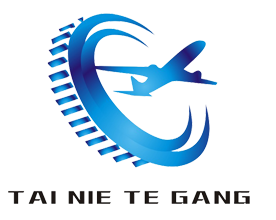
Aerospace
The development history of low expansion superalloys is reviewed The development of "Invar effect" and "age hardening" has laid the foundation for the development of low expansion superalloys The rapid development of aerospace industry and the outbreak of energy crisis in the 1970s provided a valuable opportunity for the practical application of low expansion superalloys in aerospace industry.
Aerospace
Industry Details
Aerospace history:
The development history of low expansion superalloys is reviewed The development of "Invar effect" and "age hardening" has laid the foundation for the development of low expansion superalloys The rapid development of aerospace industry and the outbreak of energy crisis in the 1970s provided a valuable opportunity for the practical application of low expansion superalloys in aerospace industry. The earliest commercial Fe Ni Co (IN9 ××) The stress accelerated grain boundary oxidation embrittlement (SAGBO performance) of the series of alloys has been significantly improved through a series of composition changes such as Nb, Ti strengthening, Al removal, and Si addition. Since then, low expansion superalloys have been widely used in the aerospace field In order to improve the oxidation resistance and reduce the crack growth rate of such alloys, new alloy systems have been studied, namely, Fe Ni Co Al Cr alloys represented by Inconel 783 alloy and Ni Mo Cr alloys represented by Haynes 242 alloy. These alloys can still achieve complete oxidation resistance at 750 ℃, providing high-quality high-temperature materials for the development of new generation aircraft engines.
The main high-temperature aviation materials are: GH2018, GH2036, GH2038A, GH2130, GH2132, GH2135, GH2136, GH2302, GH696, GH706, GH761, GH901, GH903, GH907
Solution alloy:
GH3030、GH3039、GH3044、GH3128、GH170、GH536、GH600、GH625、GH182、GH185、GH276、GH110
Main features:
Superalloy is a kind of metal material based on iron, nickel and cobalt, which can work for a long time under high temperature above 600 ℃ and certain stress; It has high high temperature strength, good oxidation and corrosion resistance, good fatigue performance, fracture toughness and other comprehensive properties. The superalloy is a single austenitic structure, which has good structural stability and service reliability at various temperatures,
Based on the above performance characteristics, superalloys are also known as "superalloys" because of their high alloying degree. They are widely used in aviation, aerospace, petroleum, chemical industry and naval ships. According to the matrix elements, the superalloys are divided into iron base, nickel base, cobalt base and other superalloys. The service temperature of iron base superalloy can only reach 750~780 ℃. For heat-resistant parts used at higher temperatures, nickel base and refractory metal based alloys are used. Nickel base superalloys play a particularly important role in the field of superalloys. They are widely used to manufacture the hottest end components of aviation jet engines and various industrial gas turbines. If the 150MPA-100H endurance strength is taken as the standard, the maximum temperature that nickel alloy can withstand at present is>1100 ℃, while that of nickel alloy is about 950 ℃, and that of iron base alloy is less than 850 ℃, that is, the nickel base alloy is correspondingly 150 ℃ to 250 ℃ higher. So people call nickel alloy the heart of engine. At present, nickel alloy accounts for half of the total weight in advanced engines. Nickel alloy is used not only in turbine blades and combustion chambers, but also in turbine discs and even in compressor blades of later stages. Compared with ferroalloy, nickel alloy has the advantages of higher working temperature, stable structure, less harmful phases and high resistance to oxidation and corrosion. Compared with cobalt alloy, nickel alloy can work at higher temperature and stress, especially in moving blades.
The above advantages of nickel alloys are related to some of their excellent properties. Nickel is a face centered cube with very
The vacuum furnace, the key equipment for superalloy production, is stable and does not undergo allotropic transformation from room temperature to high temperature; This is very important for selecting as the matrix material. It is well known that austenitic structure has a series of advantages over ferrite structure.
Nickel has high chemical stability. It hardly oxidizes below 500 ℃, and it is not affected by warm gas, water and some salt aqueous solutions at room temperature. Nickel dissolves slowly in sulfuric acid and hydrochloric acid, but quickly in nitric acid.
Nickel has great alloy ability, even adding more than ten alloy elements does not appear harmful phase, which provides potential possibility for improving various properties of nickel.











